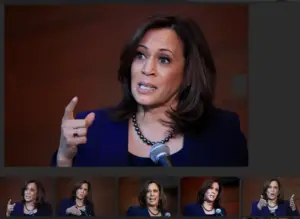Who was Bashir Khan Qureshi?

A nationalist with popular fashion
Sohail Sangi
The voice of speech he delivered at the “Freedom March” held in Karachi in March 2012, were echoing in the air, when two weeks later, nationalist leader with popular mood died in mysterious circumstances on April 7, 2012. The official version is that he died of heart attack.
Today is his death anniversary, his followers are demanding to re-investigate the case and find out the causes that led to his death. On Twitter it is trending
Over half a dozen leaders with different nationalistic approach are active in Sindh since last forty years. But no party or leader could earn popularity that Bashir Khan gained. The reason was his style and typical.

There are three major trends in Sindh’s nationalist politics. One group is fighting for the rights of Sindh through parliamentary politics. Dr Qadir Magsi, Syed Jalal Mehmood Shah are taken as protagonists of first trend.
The other wants independence. This trend is represented by Bashir Khan Qureshi, Khaliq Junejo, Abdul Wahid Arisar and others.
Bashir Khan Qureshi was an important representative of the second trend and the leader of the largest party in all nationalist parties and groups in Sindh. He became the most popular leader in nationalist politics after GM Syed.
Study of Sindhi nationalism politics shows, Dr. Magsi Rasool Bux Palijo’s main direction in politics remained against MQM while Bashir Khan Qureshi and Dr. Safdar Sarki are against Punjab.
Dr. Qadir Magsi and Rasool Bux Palijo had been part of Nawaz Sharif’s the London-based alliance he formed for his separate identity, after signing the Charter of Democracy with Benazir Bhutto.
Generally, nationalist politics remained confined to educational institutions. Bashir Qureshi, who entered politics as a student, gave a new direction to the Jeay Sindh movement. He tried his best to bring it to the notice of the people as evidenced by large gatherings and rallies.
He was in fact an activist leader. After eighties a new trend emerged. Nationalist leaders instead of mobilizing the masses or going to villages and working in difficult situations, they were content with the politics of the drawing room. On the contrary Bashir Qureshi chose the field of action not of words, hence became more popular than nationalist bigwigs and intellectuals.
Born on August, 10 1959 in the surroundings of ancient civilization Mohan Jo Daro, having a Sufi and simple nature and by greeting with folded hands in a specific Sindhi style, Bashir Qureshi joined Sindh Agriculture University Tando Jam in 1976. He was first time arrested in October 1984 from his hometown Rato Dero, district Larkana.
In 1986, when Jeay Sindh Students Federation body led by Shafi Karnani resigned, G.M Syed appointed him president of Jeay Sindh Students Federation.
He started a never ending series of Sit-ins across Sindh.
Nationalist politics, which was previously limited to corner meetings, hostel rooms or rooms for national workers, was taken out of the streets. Due to the sit-ins, he became the center of attention in the province as well as in the country. As well as mobilizing people and gaining popularity, he also solved some local issues by developing social pressure through sit-ins.
Whether it is issue of water scarcity or Kalabagh Dam project, NFC award or jobs of the people of Sindh or manipulation in the census. Bashir Qureshi went from city to city and mobilized the people. He was the person who had the most contact with the people.
During Musharraf regime, he was observed a sit-in against Kala Bagh Dam at Bibarloi Chowk near Khairpur when they came under fire. It is siad, that was the largest sit-in in the history of Khairpur.
He marched from Ranipur to Karachi. He was not one of the leaders who used to leave the city on a Land Cruiser and join the march. When he marched on foot from the Punjab border to Karachi, he had swellings on his feet. He launched a strong movement on various issues of Sindh. He held sit-ins on Sindh-Punjab border several times and blocked the traffic heading to Punjab.
Sit-ins were held in small and big cities. Long marches were held from different cities to Karachi.
Tribal clashes are a daily occurrence in Sindh. These conflicts claim many lives every month. In many places, these conflicts have had a detrimental effect on the economy, education and normal social life. To prevent tribal quarrels and bloodshed, he started caravans of “Manthh Merr” caravans. It was a field of social work but he tried to make it part of politics.
Hyderabad has generally been the center of nationalist politics. Bashir Qureshi was the first nationalist leader who not only took up residence in Karachi for political purposes but also made Karachi the axis of his politics.
He marched from many cities to Karachi. He said that it was necessary to hold a big rally in Karachi every year. Basically, the students of agriculture came to politics, but he was not going to read many books. But passion and commitment were the guide for him. Let’s say that knowledge was left behind and action went ahead.
Bashir maintained personal attachment with workers that was the key to their success.
He stayed away from parliamentary politics.
Another feature of Bashir was non-violence. The last rally he held in Karachi on March 23 did not show any weapons. Otherwise, it would have been impossible to do politics in Karachi without weapons.
Bashir Qureshi adopted the public style of politics, which was either adopted by the leaders during the independence movement or by the communists. That is, working at the grassroots level.





